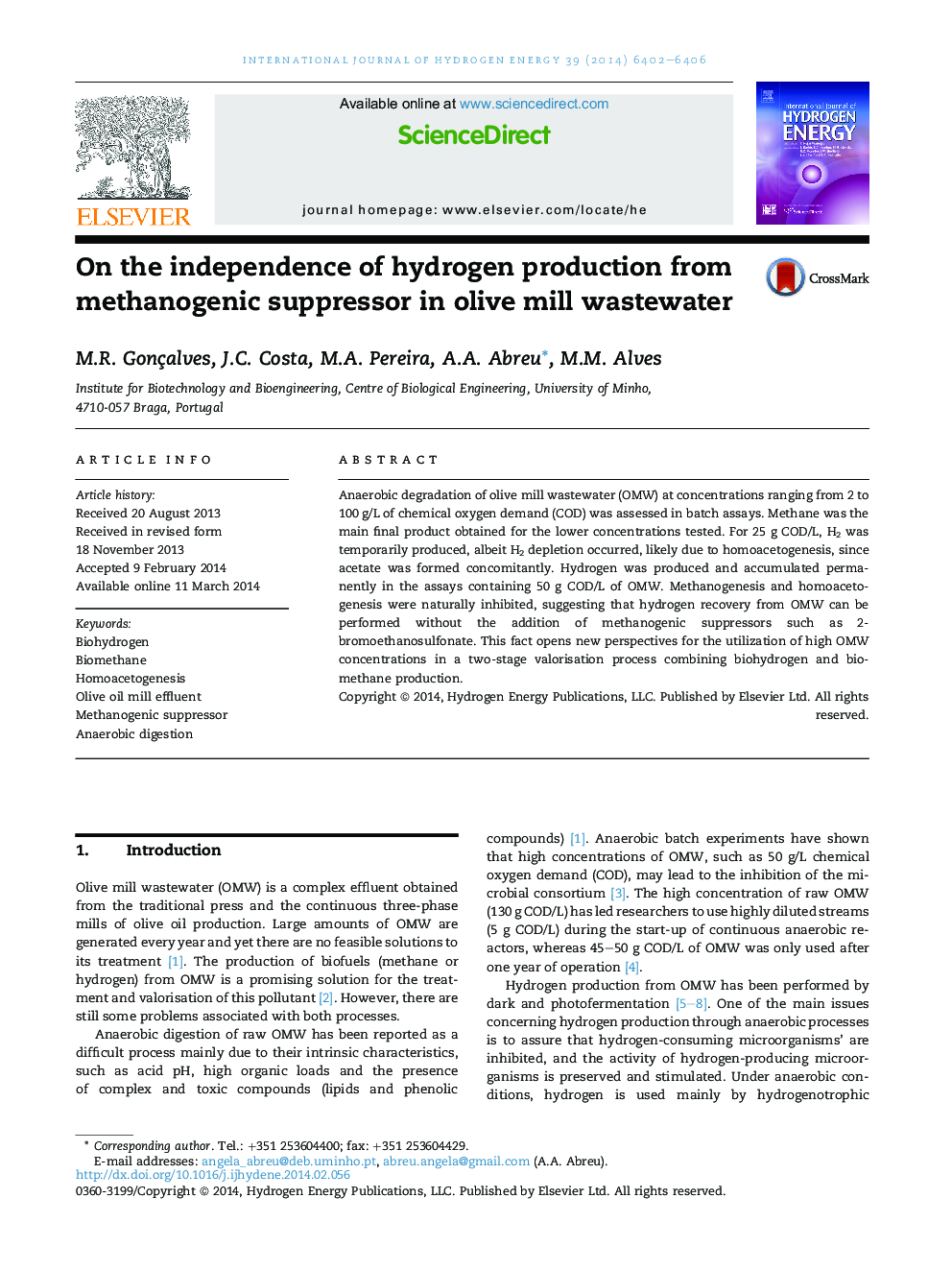| کد مقاله | کد نشریه | سال انتشار | مقاله انگلیسی | نسخه تمام متن |
|---|---|---|---|---|
| 1272833 | 1497497 | 2014 | 5 صفحه PDF | دانلود رایگان |
• Anaerobic degradation of 2–100 g COD/L of olive mill wastewater was evaluated in batch assays.
• Methane production was favoured at low OMW concentrations (<25 g COD/L).
• Methanogenesis and homoacetogenesis were naturally inhibited with ≥50 g COD/L of OMW.
• Hydrogen was produced and accumulated in the assays with 50 g COD/L of OMW.
Anaerobic degradation of olive mill wastewater (OMW) at concentrations ranging from 2 to 100 g/L of chemical oxygen demand (COD) was assessed in batch assays. Methane was the main final product obtained for the lower concentrations tested. For 25 g COD/L, H2 was temporarily produced, albeit H2 depletion occurred, likely due to homoacetogenesis, since acetate was formed concomitantly. Hydrogen was produced and accumulated permanently in the assays containing 50 g COD/L of OMW. Methanogenesis and homoacetogenesis were naturally inhibited, suggesting that hydrogen recovery from OMW can be performed without the addition of methanogenic suppressors such as 2-bromoethanosulfonate. This fact opens new perspectives for the utilization of high OMW concentrations in a two-stage valorisation process combining biohydrogen and biomethane production.
Journal: International Journal of Hydrogen Energy - Volume 39, Issue 12, 15 April 2014, Pages 6402–6406
